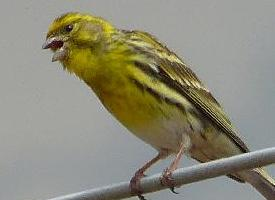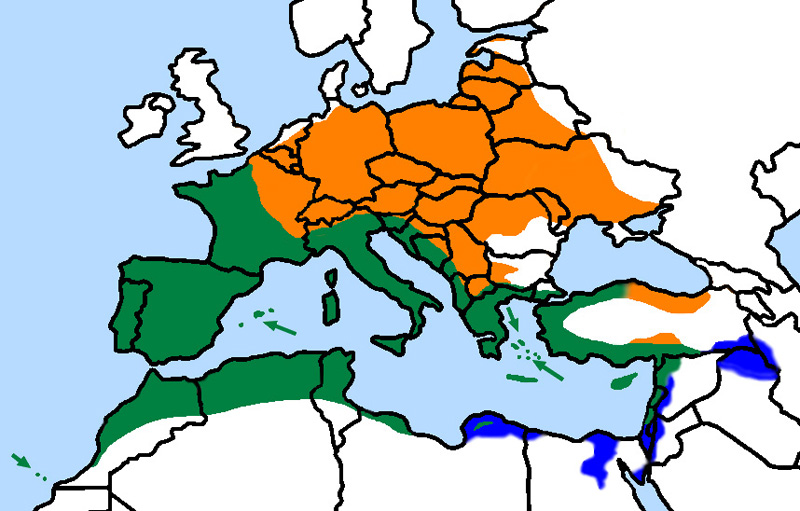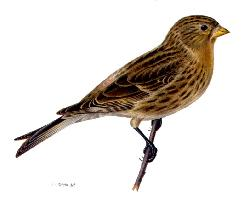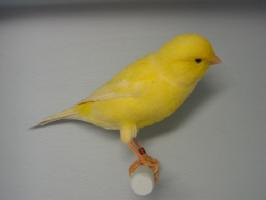
Description de l'animal
The European Serin, scientifically named Serinus serinus, is a small, charming passerine bird belonging to the finch family, Fringillidae. This species, with its vibrant plumage and melodious song, adds a splash of color and melody to its habitats across various regions of Europe, North Africa, and parts of the Middle East. Measuring approximately 11 to 12 centimeters in length and weighing around 12 to 18 grams, the European Serin is a petite bird with a stout body, a short tail, and a strong, conical beak that is well-adapted for its seed-based diet.The male European Serin is particularly noted for its striking appearance during the breeding season. Its upperparts display a mix of green and yellow, providing excellent camouflage among the leafy environments it prefers. The underparts are a brighter yellow, especially on the throat and breast, making it a sight to behold when perched in the sunlight. The female and juvenile Serins are more subdued in color, with their plumage being a blend of grey, green, and yellow hues, allowing them to blend seamlessly into their surroundings and evade predators.
European Serins are gregarious birds outside the breeding season, often forming flocks that forage together in weedy fields, gardens, and along roadsides. Their diet primarily consists of seeds from a variety of grasses and herbs, although they will also consume small insects, particularly during the breeding season to feed their young.
The song of the male European Serin is a distinctive and delightful aspect of its behavior, consisting of a rapid series of high-pitched notes that can be heard throughout its habitat, particularly during the spring and early summer. These vocalizations play a crucial role in territorial displays and in attracting a mate.
Breeding typically occurs from late April through July. The European Serin constructs a compact, cup-shaped nest in a tree or bush, where the female lays between three to five eggs. The eggs are incubated primarily by the female for about 13 days, with both parents participating in feeding the altricial (helpless) chicks for another 14-15 days until they are ready to fledge.
Despite facing threats from habitat loss and degradation, the European Serin has managed to maintain stable population levels in many parts of its range, thanks in part to its adaptability to a variety of environments, including urban areas where it can often be seen visiting bird feeders. The species is currently listed as Least Concern on the IUCN Red List, indicating that it is not at immediate risk of widespread decline.
In summary, the European Serin is a small yet vibrant bird species, celebrated for its colorful plumage and cheerful song. Its presence across a diverse range of habitats highlights its adaptability and resilience, making it a beloved fixture in its native landscapes.
Carte de répartition

Animaux similaires
Nouvelles photos d'animaux
Top 10 des animaux
- Dolphin gull (Leucophaeus scoresbii)
- Diana monkey (Cercopithecus diana)
- Moustached guenon (Cercopithecus cephus)
- Galápagos tortoise (Geochelone nigra complex)
- Japanese macaque (Macaca fuscata)
- Stone loach (Barbatula barbatula)
- Russian tortoise (Testudo horsfieldii)
- Greek tortoise (Testudo graeca)
- Common flying dragon (Draco volans)
- Vendace (Coregonus albula)


